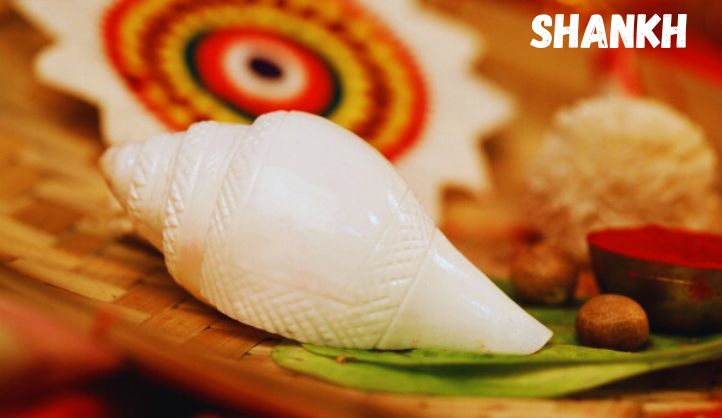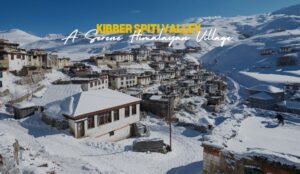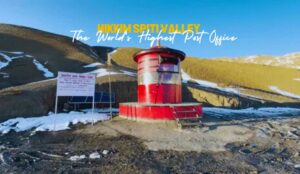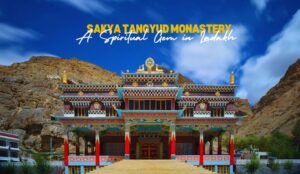In the picturesque landscapes of Uttarakhand, where the serene beauty of the Himalayas meets the cultural richness of its people, the shankh (conch shell) holds a significant place. This traditional instrument not only resonates with spiritual symbolism but also plays a vital role in the cultural fabric of the region.
Symbolism and Spiritual Significance
The shankh is deeply rooted in Hindu mythology and religious practices. It is revered as a sacred object, often associated with Lord Vishnu and his avatars, particularly Lord Krishna. In Uttarakhand, the shankh is used in various religious rituals, including aartis (devotional songs) and pujas (worship ceremonies). Its sound is believed to purify the surroundings and evoke a sense of divine presence.
Traditional Use in Uttarakhand
In the context of Uttarakhand’s rich cultural heritage, the shankh holds a unique position. Traditionally, it has been used during festivals, weddings, and other auspicious occasions to invoke blessings and create an atmosphere of auspiciousness. The clear, resonant sound of the shankh is believed to ward off negative energies and attract positive vibrations.
During religious processions and ceremonies in Uttarakhand, the shankh is often blown to announce the beginning of rituals or mark significant moments. Its sound echoing through the valleys and mountains adds to the spiritual aura of the surroundings, fostering a sense of unity and devotion among the participants.
Craftsmanship and Making of the Shankh
Crafting a shankh is an art form in itself. Traditionally, skilled artisans carefully select conch shells, often sourced from the Indian Ocean, and meticulously carve and polish them to produce the desired shape and tone. The process requires patience and expertise, as each shankh is unique in its size, shape, and sound quality.
Some other Traditional instruments of Uttrakhand
Uttarakhand, with its rich cultural diversity and heritage, boasts several traditional instruments that reflect the region’s vibrant cultural identity.
Damru
The damru is a small two-headed drum shaped like an hourglass. It is primarily associated with Lord Shiva and is often played during religious rituals, especially during devotional songs (bhajans) and ceremonies in temples across Uttarakhand.
Dhol
The dhol is a large barrel-shaped drum with two drumheads, played with sticks. It is widely used in folk music and dance performances in Uttarakhand, adding rhythm and energy to traditional folk songs and celebrations.
Dholki
The dholki is a smaller, barrel-shaped drum with a single drumhead, played with hands or sticks. It accompanies folk singers and musicians during festive occasions, weddings, and cultural gatherings in Uttarakhand.
Ransingha
The ransingha is a traditional brass trumpet-like instrument used by shepherds and pastoral communities in Uttarakhand. It produces a loud and resonant sound and is played during festivals, processions, and community events.
Thali
The thali is a set of metallic plates or cymbals that are struck together rhythmically. It is used to accompany folk dances like the Chholiya and Barada Nati, adding a percussive element to the lively and energetic dance performances.
Kartal
The Kartal is a pair of wooden clappers with metal jingles attached to them. It is held in the hands and played by striking the clappers together rhythmically. Kartals are integral to devotional music, particularly during Kirtans and religious ceremonies.
Mashakbeen
The bagpipes, known locally as Mashakbeen or Mashakpiper, are a unique addition to Uttarakhand’s traditional musical instruments. They were introduced during the British colonial period and are still played in some regions, particularly in folk music ensembles.
Turahi
The turahi is a traditional wind instrument made from bamboo or wood. It is similar to a trumpet but with a simpler design. The turahi produces a loud and clear sound and is used in folk music and festive celebrations in Uttarakhand.
Conclusion
The shankh remains a timeless symbol of spirituality and cultural identity in Uttarakhand. Beyond its musical and ritualistic roles, it embodies the essence of tradition and connects generations through its resonant call. As Uttarakhand progresses into the future, preserving the heritage of the shankh ensures that its cultural legacy continues to inspire and uplift communities, echoing through the valleys and hills of this enchanting region.
FAQs about the Shankh Traditional Instrument of Uttarakhand
1. What is a shankh?
A shankh is a conch shell, typically found in the Indian Ocean, revered for its sacred and spiritual significance in Hindu culture. It is used as a traditional musical instrument and in religious ceremonies.
2. What role does the shankh play in Uttarakhand?
In Uttarakhand, the shankh holds a prominent place in religious rituals, festivals, and auspicious ceremonies. It is blown to invoke blessings, purify the atmosphere, and mark significant moments during processions and gatherings.
3. How is the shankh made?
Crafting a shankh involves skilled artisans who carefully select conch shells, carve them into shape, and polish them to produce the desired sound quality. The process requires expertise and craftsmanship to maintain the instrument’s traditional significance.
4. What is the significance of the shankh’s sound?
The sound of the shankh is believed to be purifying and spiritually uplifting. It is thought to ward off negative energies and attract positive vibrations, creating an auspicious atmosphere during religious ceremonies.
5. How does the shankh contribute to cultural identity in Uttarakhand?
The shankh symbolizes cultural heritage and tradition in Uttarakhand, connecting communities through its resonant sound and spiritual symbolism. It plays a vital role in maintaining the region’s cultural identity and fostering a sense of unity among its people.









